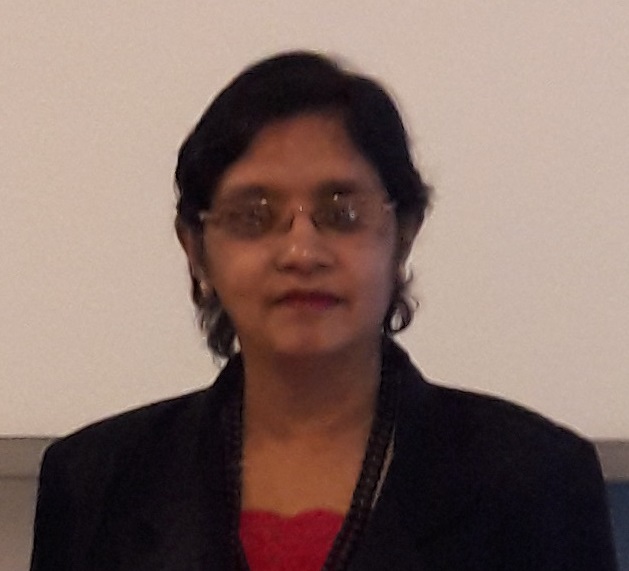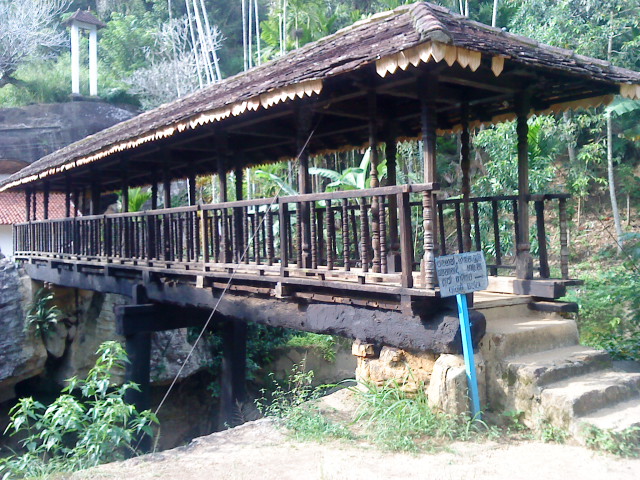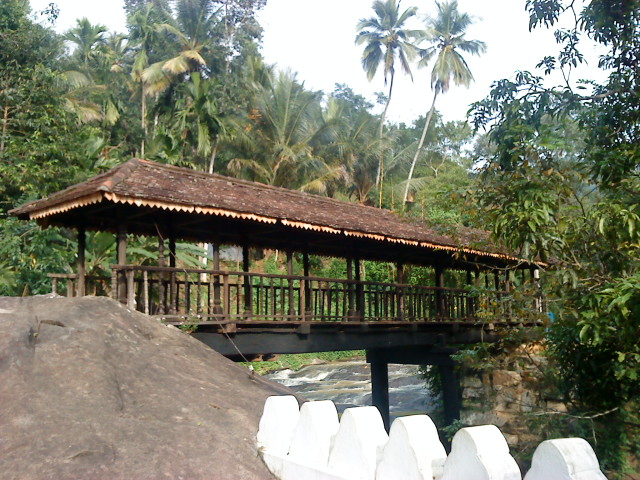Bogoda Wooden Bridge – oldest surviving wooden bridge in Sri Lanka
By Arundathie Abeysinghe
 Situated in Hali-Ela in Badulla, Bogoda Wooden Bridge dates to 1600s, but the temple adjoining the Bridge dates to the first century BC. The covered wooden bridge was built across the *Gallanda Oya, (Oya meaning stream in Sinhala), a branch of Uma Oya in *Badulla District; a tributary of the *Mahaweli River which is on an ancient route that linked Badulla and Kandy in the past.
Situated in Hali-Ela in Badulla, Bogoda Wooden Bridge dates to 1600s, but the temple adjoining the Bridge dates to the first century BC. The covered wooden bridge was built across the *Gallanda Oya, (Oya meaning stream in Sinhala), a branch of Uma Oya in *Badulla District; a tributary of the *Mahaweli River which is on an ancient route that linked Badulla and Kandy in the past.
According to folklore, the Bridge was built for Buddhist Pilgrims from Badulla to cross the rock strewn Gallanda Oya on their way to Kandy to worship at the Temple of the Sacred Tooth Relic.

The wooden railings on both sides of the Bridge are decorated with elaborate ornamental work influenced by the art and crafts of the *Kandyan Era. The Kandyan style clay shingle roof is supported by 11 carved pillars with a hand rail on both sides supported by many upright column posts with beautifully carved hardwood, a marvel of craftsmen of yesteryear.
According to chronicles, King Keerthi Sri Rajasinghe (1747 – 1782) has ordered the Bridge to be built as crossing Gallanda Oya during the rainy season was difficult and dangerous for pilgrims. The roof of the Bridge has been built over the Bridge later as pilgrims could have a place to rest during their arduous journey to Kandy as well as people travelling across the Bridge can be protected from sun and rain. In the past, the Bridge had been used as an Ambalama (a resting place for weary travelers) also.
According to archeologists, this is the oldest surviving wooden bridge in Sri Lanka. In the past, Buddhist monks had lived in the cave adjoining the Bogoda Temple. This bridge is still in good condition and it is used by villagers to go to the temple. Bogoda Wooden Bridge is also used as a road link to travel to several villages in the vicinity of Bogoda Temple. The hamlet Mahakumbura is situated across the Bridge.
This bridge is a fine example of engineering skills and craftsmanship of Sri Lankan craftsmen.
In the famous literary work, Sandesa Kavya (Epistle Poems 1612-1624), in the chapter Maga Salakunu (road signs), the route through this bridge is described (the route from Badulla to Kandy by foot). The poet invites travelers to worship the Bogoda Temple on their way from Badulla to Kandy.
According to legends, a father and son who were clever timber craftsmen had built this bridge. It is completely made of wood including the fixtures without using a single metal nail and this is the only one of its kind in Sri Lanka. The bridge is about 15 meters long and about 1.5 meters wide.
Jack (Artocarpus heterophyllus) and Kumbuk (Terminalia arjuna) logs have been used to construct the Bridge and the structure rests on a massive tree trunk about 10 meters tall. For the railing and decorative work the craftsmen have used Kaluwara (Diospyros ebenum) timber and Milla timber of the milla tree (Vitex pinnata).
The Bridge is a unique piece of architecture; a single piece of wood connects the two banks of Gallanda Oya.
The Bogoda Vihara (Vihara meaning temple in Sinhala) is located beside the Bogoda Wooden Bridge which is partially built into a rock cave on one side of the Bridge. There are ancient ornate paintings reminiscent of the Kandyan Era. According to legends, it had been commissioned by King Walagamba in the 1st Century BC, during the *Anuradhapura Era. According to the *Brahmi script inscribed in stone near the Temple, the Temple had been donated to a Buddhist monk by Tissa, a provincial leader in Badulla.

According to chronicles, the rock cave beside the Bridge has been converted into a temple by King Walagamba (104-76 BC) who had found refuge in the Cave. He has also used the adjoining tunnel to escape from the marauding Dravidian invaders from South India. The King had lived in the Cave for two and a half years and had used the 22 kilometer long tunnel through the rocks. He had used the Cave and the Tunnel to organize his army and defeated the invaders. After he won the battle with Dravidians, he had converted the rock cave into a temple honoring the Buddha which had provided him refuge as a hideout.
The interior walls of the Temple are made of a mixture of cotton wool and bees honey paste mixed with purified white clay. The walls of the Temple are adorned with beautiful paintings and sculptures of the Kandyan Era. The Temple has a ‘Meda Midula’ (indoor garden) and pillared verandahs.
Location: about 15 kilometers from *Ella off *Hali-ela junction
- Anuradhapura – A major city in Sri Lanka, the capital of Anuradhapura Distict.
- Anuradhapura Era – A period in the history of Sri Lanka from 377 BC to 1017 AD and during this period, King Pandukabaya established his kingdom in Anuradhapura and became the first monarch to rule from Anuradhapura.
- Badulla – Situated in lower central hills, Badulla is the capital city of *Uva Province and Badulla District.
- Brahmi script – The earliest writing system developed in India after the Indus script and considered as an influential writing system. All modern Indian scripts as well as several hundred scripts that are in South Asia, Southeast and East Asia are derived from Brahmi.
- Ella – Situated at an elevation of 1041 meters above sea level amid lush green forests, rolling carpets of tea and breathtaking mountains, Ella is a small town in the *Badulla District of *Uva Province. Popular among local and foreign tourists, Ella has a mild climate and a laid-back atmosphere.
- Gallanda Oya – This stream (oya in Sinhala) is a branch of Uma Oya, a tributary of *Mahaweli River.
- Hali ela – A Divisional Secretariat of Badulla District of Uva Province.
- Kandyan Era – Kandyan period is from 1597-1815, the last independent monarchy of Sri Lanka. Kandyan Kingdom is located in the central region of Sri Lanka. The Kingdom was independent from Portuguese and Dutch rule. Later, the Kingdom was colonized by the British in 1815.
- Mahaweli River – Sri Lanka’s longest river, 335 kilometers in length with a drainage basin of 10,448km2.
- Uva Province – This is the fourth largest province in Sri Lanka bordered by Central, Eastern and Southern provinces.







